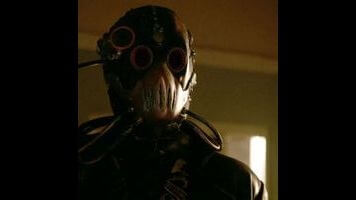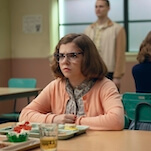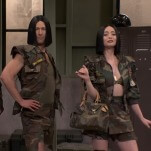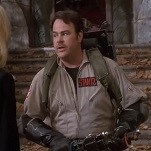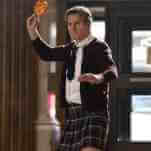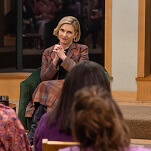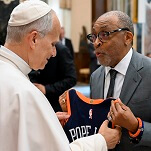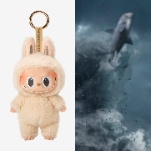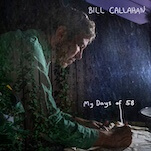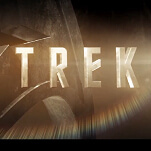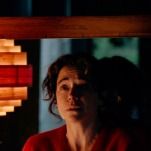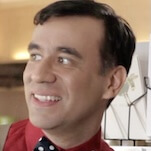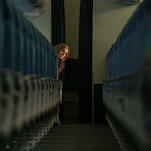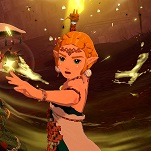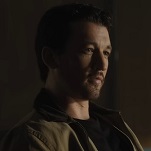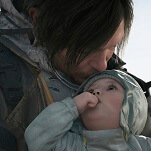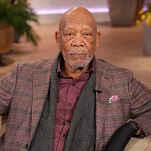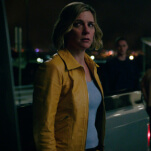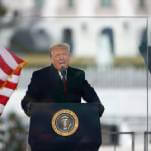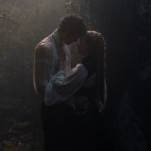I know I sound like a broken record, but asking “why?” has become the standard way to watch Teen Wolf—assuming you’re not a television viewer who just accepts everything at face value—and not in a good way. Teen Wolf forgot somewhere around season three that season arcs need to be complex but not complicated, intricate and rich but not dense. To compare it to one of its genre contemporaries, The Vampire Diaries’ fourth and fifth seasons forgot those rules, and as a result, they ended up messing with three seasons of mythology that came before it and traveling an insanely difficult road to get back to its former quality. Teen Wolf doesn’t really use its new mythology to change the past; it adds mythology like a game of Jenga where it only places blocks on the top. It doesn’t add that mythology organically, and as I have mentioned before, it comes across a lot like the writers throwing any piece of mythology they can find at a story wall and going with whatever literally sticks.
Simply put, I shouldn’t feel like I have to take a folklore and mythology lesson to understand the show, especially when Teen Wolf’s take on folklore and mythology is spotty at best.
“Ouroboros” (our mythology homework of the week, with a connection to phoenixes) is bookended with the Desert Wolf (Marisol Nichols, in pretty solid casting) and Deaton in a couple of terribly written scenes. The first of these two scenes unfortunately sets the tone for the rest of the episode, quality-wise, and the second serves as a reminder that the Desert Wolf is a holdover from season four’s weakest storyline. A season four arc promised this character would be revealed, but while this season isn’t great, it’s also not the same as the previous one. This character has no place in this season, not tonally and not thematically, which is a reminder of Teen Wolf’s regular inability to (or decision not to) course correct or adapt. Or, to steal from Teen Wolf’s “spotty” mythology itself, “evolve.” In a show of teen wolves and chimeras, the Desert Wolf is a werecoyote who kills people with her guns (or vehicular homicide) and, for some reason, has an urge to kill her daughter. Nothing about that sounds like anything happening in the rest of this season, because it’s not. It’s simply a continuation of season four’s terrible Mexico plots, which have just as little use here as they did in the Benefactor plot.
Continuing a little bit after last week’s “Strange Frequency” left off, the best part of “Ouroboros” comes from a debate about how to handle all these teenage deaths in Beacon Hills, which is just as depressing as it sounds. After all, these bodies are piling up at a rate that appears to be much faster than ever before (the same could be said about skin grafts, apparently). This plot is one that belongs to Linden Ashby and Melissa Ponzio, and that right there could simply be the reason why it’s the best part of the episode. Ashby and Ponzio are on an almost completely different show from everyone else here. Sure, the dialogue really isn’t that great on their show either (“No more bending the rules for anyone.” “Maybe you should learn to bend a little, before someone breaks.”), but they manage to elevate the material in a way you aren’t getting in Liam/Hayden or Deaton/Desert Wolf scenes (or even in better episode moments from Scott or Stiles).
As Teen Wolf’s adult cast disappears in favor of very young eye candy, so does a lot of what made the show work in the first place. Yes, the eye candy was always here, but the story was still at the forefront. Even season two, which opened with wet abs and continued with towel-clad Jackson “I have a restraining order!” Whittemore, had the story front and center. But as the stories get weaker (yet complicated) and a reliance on people who can actually act (or at least have an “it” factor) dwindles, the show suffers in a way things like a gay cinema-themed night club can’t hide.
A few weeks ago in Stray Observations, I earnestly brought up the fact that the Teen Wolf universe is supposed to be one of complete understanding and acceptance—in fact, it’s a perfect world in a sense, except for all of the monsters. My thought was that, as such, informing the townspeople of Beacon Hills of the craziness—instead of hiding it with mountain lions, if they even try to hide things anymore—could do a lot to at least create a culture of safety awareness in this world.
This is an episode that very slightly addresses such an idea, as Sheriff Stilinski and Melissa McCall argue the best way to approach the whole chimera situation, taking extreme sides in each situation. Because real, human crime apparently doesn’t exist in Beacon Hills, Stilinski wants to take this supernatural crime and follow through with a standard investigation (which, honestly, can only put his deputies in danger, as seen in the hospital). Melissa, on the other hand, wants to give the pack the benefit of the doubt and allow them to sort through everything on their own, which sadly means the death count doesn’t matter. It’s a darker version of the discussion Melissa had with Kira’s mom in season four. While that was a discussion of whether or not it’s a good idea for them to allow their kids to be a part of this dangerous world, this discussion is about whether or not their kids should be punished for being a part of this dangerous world. Plus, it poses an actual good question: What exactly is Sheriff Stilinski’s idea for a course of action when it comes to the realities of the supernatural forces in Beacon Hills, especially since he won’t let Melissa tell the truth in her witness testimony? That’s interesting, even if they can’t come to a middle ground (yet).
Liam and Hayden (and new kid Zach) versus the Dread Doctors, on the other hand, is not good. Really, the pacing of this episode is off, as Scott/Malia/Mason spend an inordinate amount of time looking (poorly—why would you yell if you’re also expecting Dread Doctors?) for Liam and Hayden, while most of the scenes returning to Liam and Hayden are good for nothing more than Liam (also) yelling for the Dread Doctors to stop what they’re doing (which, surprisingly, doesn’t persuade them to stop). The former scenes actually lead to a good character moment for Scott, but a lot of it is nothing new. Really, besides adding confusion to the way time works in Teen Wolf, every return to these scenes—which could easily be condensed—reads like a lack of ideas for the episode, padding it and stretching it out to save things for future episodes. Things like Hayden’s fate, which is kind of ignored by the end of the episode when Liam takes away her pain (but doesn’t heal her) and Theo can’t keep his Single White Teen Wolf eyes off of them. What’s more frustrating is that it’s time that could be used to really explain the Dread Doctors, because even at this point, what they are and what their motivations are make no sense.
And you know what? Tyler Posey plays the walls closing in on Scott so well in this episode (and blaming himself for all of this, as Theo becomes the “hero”), but it’s difficult to accept it completely because of how often Teen Wolf goes with the perfect-alpha, chosen-one route for Scott by the end of each of its storylines. Season four’s finale absolutely destroyed the idea of it ever being alright again, as the Berserker Scott plot point was a slap in the face to everything the show had barely built with that particular mythology. So even if that’s not how 5A ends, that’s very likely how the whole story will end. Let’s say Theo is an opponent who schemes because he wants what Scott has. But every season’s final message is that no one can have what Scott has. Everything until then is spinning wheels.
Spinning wheels describes the Dread Doctors, too, and not just because of the way they sound. The rules of the Dread Doctors remain shaky, as they reached their height as reminders of truly terrible (though cinematic) moments in these characters’ lives, only to then just bring on random fears as they glide through a room, and now finally do what Valack originally said they would do (Ben-Is-Glory themselves once a person reads the book). These are supposedly characters rooted in science, but none of that explains their powers, and everything about their experiments points to them being terrible scientists. Why? How? For what?
The Dread Doctors and their inability to create a success (as Deaton’s adventures have confirmed) makes them unsettling in their destruction and mass murders but not actually terrifying in their experiments (and successes, if those exist). Earlier on, this half-season felt like it might all make sense once it was over, but now, this is episode eight of a 10-episode order, and a show should make a certain amount of sense and have a certain amount of momentum throughout, not just in the final episode. Will Teen Wolf?
Stray observations
- For those keeping score at home, we see a moment from the season premiere’s opening teaser here: Melissa slapping Stilinski.
- The thing about Kira going away for awhile is that Kira always (at least for hyperbole’s sake) goes away for awhile. This happened last season too, only without a ’shipper video in the episode prior to her leaving. Also, given how powerful we’ve see the Dread Doctors be, what’s to say they can’t track her down or stop her from leaving town? The flashback we saw had Kira’s parents completely zoned out as the Doctors performed surgery on her in highway traffic. (Also, it’s a shame Kira’s problems are Dread Doctor-related and not really kitsune-related. Much like banshees, kitsunes are underserved here.)
- Why does a werecoyote need a gun to kill people? Unrelated: Why is Liam so helpless?
- “#TapThatNeck” No.
- As someone who doesn’t usually find herself with face-blindness, I will say I confused Corey for Theo at least twice in this episode and then spent the rest of Corey’s on-screen moments rather frustrated by the fact they cast someone who looked so much like an “established” recurring character. Every other new character on this show looks like a cross between Dylan Sprayberry and Cody Christian (which includes new, possibly dead chimera Zach), and that right there is what should be called a failure.
- Was Zach played by that bad of an actor (or at least that badly directed) or was he supposed to actually be played as suspiciously as the character was? The same question goes for Corey, though in the case of Zach, the problem is that he was far too lucid. Guest acting is really disappointing this episode, as Deputy Clark’s moments range from awkward to more awkward (see: the scene where she interrupts the Sheriff and Melissa).
- According to all-knowing IMDB, Corey will be in 21 episodes.
- Stiles and Lydia now know Parrish is the chimera body jacker and where he’s been taking the bodies. Way to be sloppy, Parrish.
